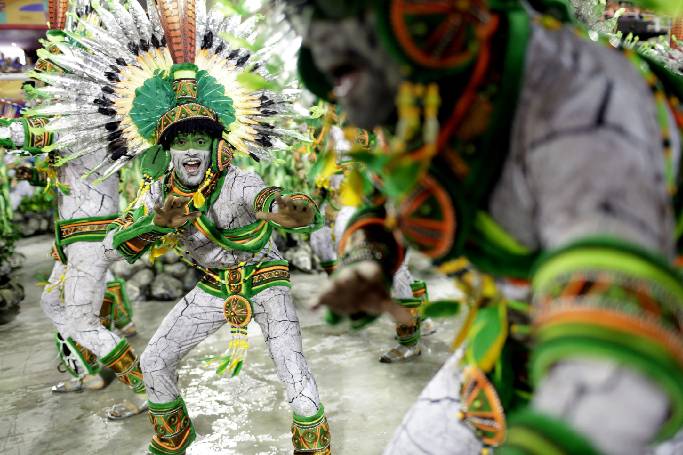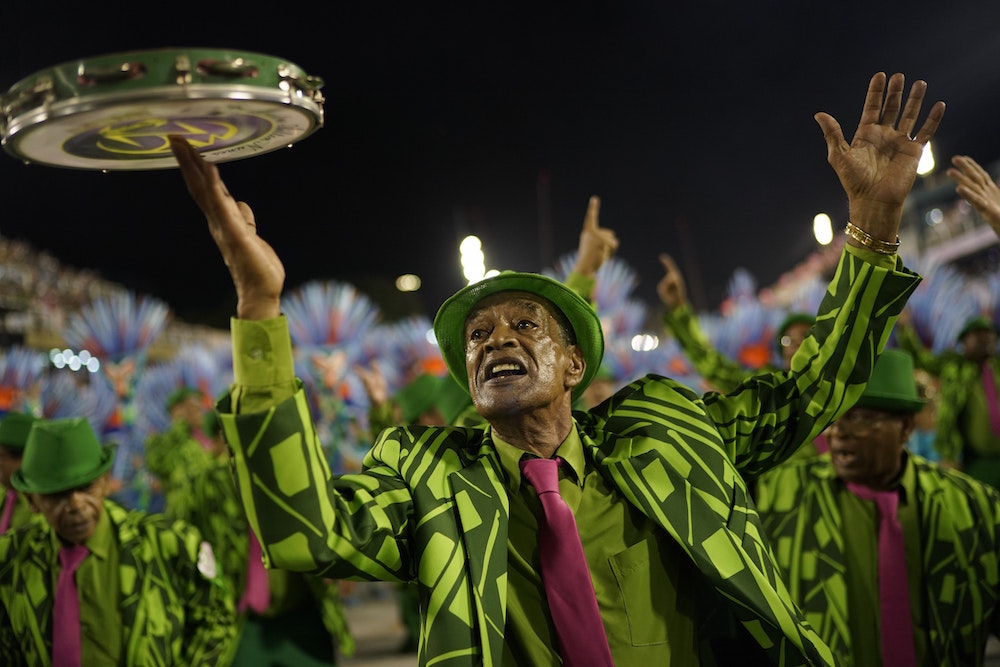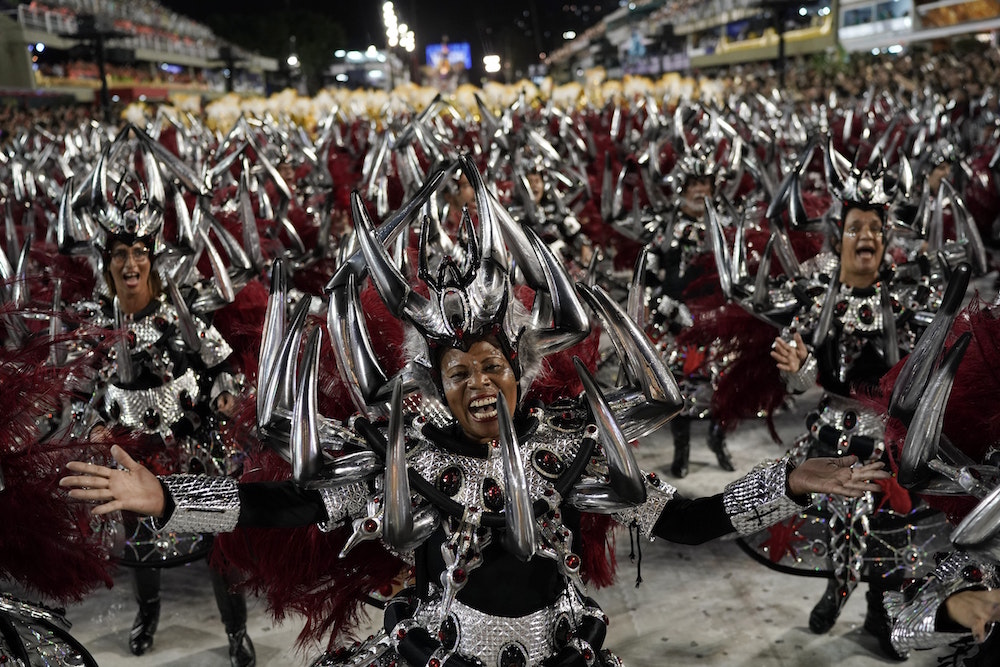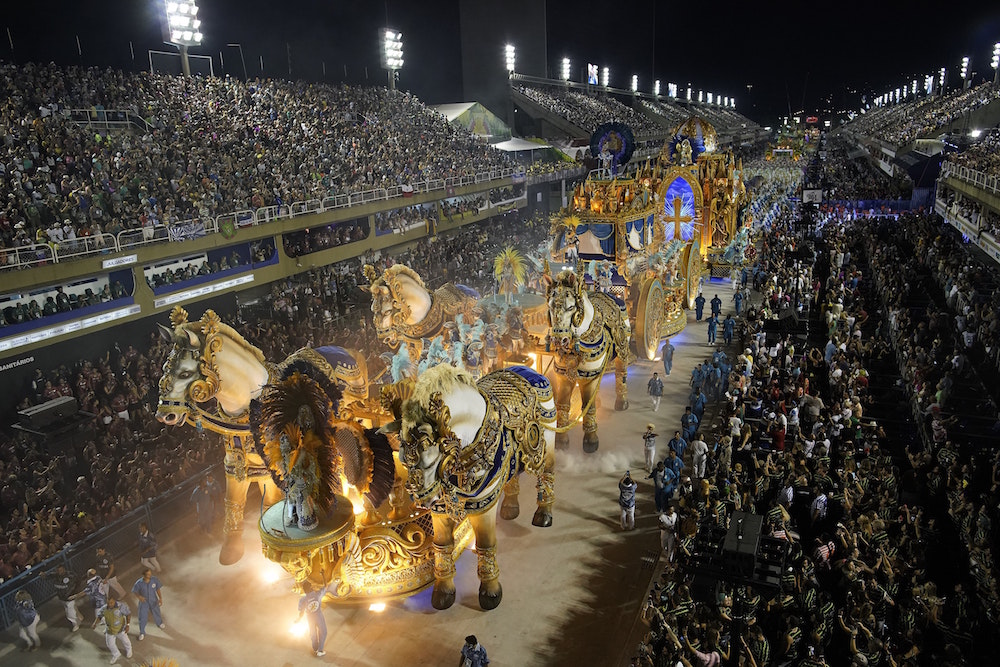Rio Carnival: Why This Iconic Brazilian Festival Is Still The Life And Soul Of The Party
As Rio’s annual carnival begins to wind down, it’s never too early to start planning for next year
17 March 2019

All Credits: PA
It’s been a gloomy couple of years for Brazil. An extremely divisive presidential election has wrenched the country in two; the crisis in Venezuela threatens to seep through their shared border; and footballing failures mean still no World Cup since 2002.
Fortunately, there could be no better antidote to Brazil’s blues than, quite literally, the biggest party in the world.

Even the more conservative estimates suggest that on each day of the Rio Carnival some two million people attend (for context, that’s roughly the population of Slovenia), packing the cobbled streets to party the night away.
Last year saw the deployment of more than 17,000 police, the sale of an estimated seven million litres of beer, and the distribution of roughly 106 million complimentary condoms.
If beer and condoms aren’t enough, swing by the Sambadrome – a 90,000-capacity parade venue that hosts the carnival’s flagship samba show. Between kaleidoscopic costumes, carefully choreographed dance routines and gigantic parade floats, the Rio Carnival unites an entire city in unbridled celebration.

Partying Through History
No event achieves the scale of the Rio Carnival without incorporating a wide array of ideas and influences – in this case, a blend of African and European.
Most observers agree the carnival has its roots in European paganism. A Greek festival celebrating Dionysus – god of wine, decadence and revelry – is considered a likely candidate, subsequently retrofitted with Catholic connotations. It became a celebration of food ahead of the lean times of Lent – indeed the word carnival may be derived from the Latin ‘carne vale’, meaning ‘farewell meat’.

The first Rio carnivals in the 1720s involved water fights and throwing around mud and food, but soon parades took over with masks and elaborate costumes. The 1840s saw fully fledged masquerade balls – dominated by waltzes and polkas – before samba became the dominant dance in 1917.
Developed from African music brought to Brazil by the slave trade, samba slowly grew into the voice of the carnival – and the sound of Brazil. Today, some 200 samba ‘schools’ parade, perform and compete each year.
The introduction of ticketing in 1961 irritated some of the samba stalwarts, but has allowed the festival to pull in an annual income of roughly a billion dollars.

How To Visit
During carnival, Rio becomes a 24-hour, outdoor night club. Men dress as women, women dress in spectacular outfits, and themed ‘blocos’ (organised street parties that frequent the same sites ever year) sport anything from polka dots to latex and leather. Perfectly mixed caipirinhas – Brazil’s national cocktail – should be your drink of choice.
As with a normal nightclub, keep at least a few of your wits about you. Stow valuables securely in a pouch or pocket, wear closed shoes to protect your feet from the inevitable broken glass, and never leave your drink unattended.

You’ve timed out on 2019, but your 2020 planning starts now, and the festivities will run from February 21-26. The smart money goes on a hotel away from the city centre – unless you want the relentless thudding of Brazilian percussion to keep you awake even after you’ve stumbled back to your room.
Tickets are sold by a range of international brokers and go on sale months in advance. Prices vary wildly based on date, parade, ticket type and seller, and 2019 offerings retailed at anywhere from £75/AED 366 to upward of £1,000/AED 4,891.
More importantly though, you have nearly a year to learn to samba. We wish you the best of luck.
- Tags:
- travel 2019
- Rio Carnival
- holiday
- travel

















